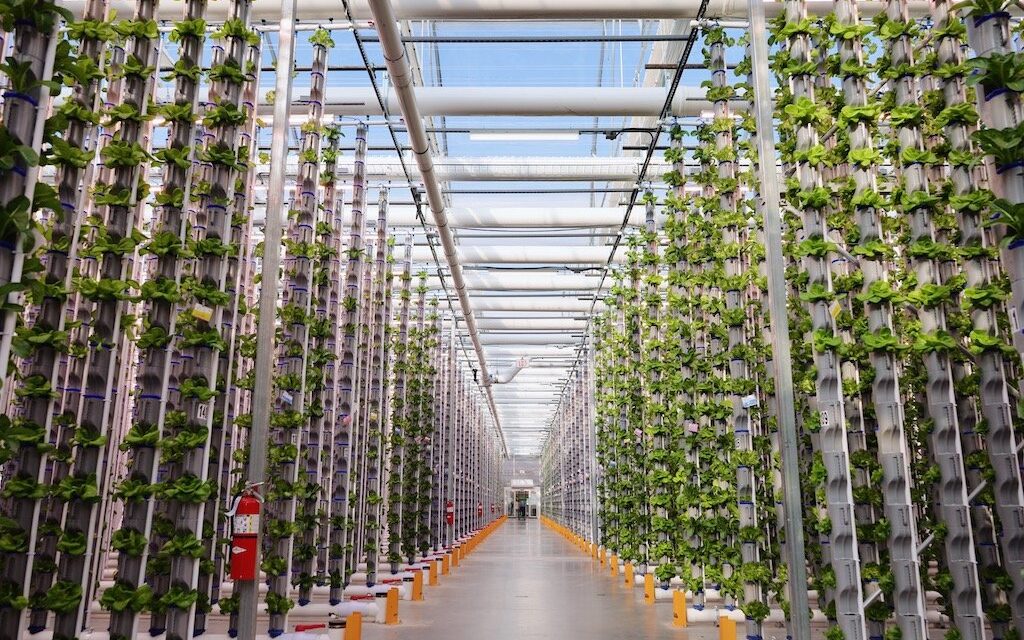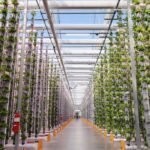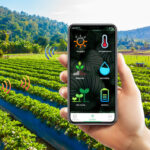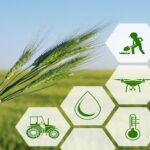Agriculture is reaching new heights, quite literally, with the advent of vertical farming and controlled environment agriculture. These innovative approaches are redefining how we grow crops, enabling us to cultivate food in unexpected places and under carefully regulated conditions. In this article, we’ll explore the fascinating world of vertical farming and controlled environment agriculture and discover how they’re reshaping the future of farming.
Vertical Farming Takes Agriculture Sky High
Picture fields of crops reaching towards the sky instead of sprawling across vast stretches of land. That’s the essence of vertical farming. This cutting-edge technique involves stacking crops in multiple layers within controlled indoor environments. By utilizing advanced technologies like LED lighting, hydroponics, and precise climate control, vertical farms can create optimal growing conditions for a variety of crops. Imagine growing fresh lettuce, strawberries, and even small trees inside a towering building in the heart of a city – that’s the magic of vertical farming.
Controlled Environment Agriculture: Nature Meets Technology
At the core of vertical farming lies the concept of controlled environment agriculture. Instead of relying on unpredictable outdoor conditions, controlled environments allow farmers to fine-tune every aspect of a plant’s growth. From temperature and humidity to light intensity and nutrient levels, every element is carefully adjusted to create the perfect environment for growth. This level of precision not only accelerates plant growth but also minimizes the need for pesticides and reduces water usage.
The Technology Behind Vertical Farms
Vertical farms employ an array of high-tech tools to create their own mini ecosystems. LED lights mimic sunlight, providing the right spectrum and intensity for photosynthesis. Hydroponic systems deliver water and nutrients directly to the plant roots, eliminating the need for soil. Automated climate control systems maintain optimal conditions day and night. And sensors continuously monitor plant health, adjusting factors as needed. All these technologies work together to create a harmonious environment that promotes rapid, efficient, and resource-conscious growth.
The Benefits of Going Vertical
Vertical farming and controlled environment agriculture offer a host of benefits that could revolutionize food production. First and foremost, vertical farms can be established in urban areas, bringing fresh produce closer to consumers and reducing the carbon footprint associated with transportation. These farms also have the potential to grow crops year-round, providing a consistent supply of food regardless of weather conditions. Furthermore, the controlled environment minimizes the risk of pests and diseases, reducing the need for harmful chemicals.
Challenges and Future Prospects
While vertical farming holds great promise, it’s not without its challenges. The initial setup costs can be substantial, and managing the complex technology requires skilled expertise. Energy consumption is also a concern, especially with the high demand for lighting and climate control. However, as technology improves and becomes more energy-efficient, these challenges may become less significant.
Looking ahead, the future of vertical farming is exciting. As the world population continues to grow and urban spaces become more limited, vertical farms could play a crucial role in ensuring food security. With ongoing advancements in automation, renewable energy sources, and sustainable practices, vertical farming has the potential to transform agriculture into a more efficient, environmentally friendly, and locally accessible endeavor.
Conclusion
Vertical farming and controlled environment agriculture represent a remarkable fusion of nature and technology. By challenging traditional notions of farming and embracing innovation, these methods are opening doors to new possibilities in food production. As we continue to explore and refine these techniques, we have a unique opportunity to reimagine the way we grow and consume food, ultimately shaping a more sustainable and resilient future for our planet.





